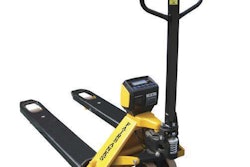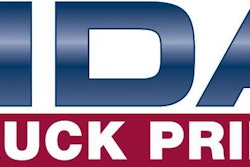Lean manufacturing (originally developed in Japan) has helped factories throughout the world reduce inventories, lower labor costs and increase overall efficiencies. The same concepts embraced by lean manufacturing practitioners can help even smaller distributors achieve the goal of effective inventory management.
Effective inventory management allows a heavy-duty distributor to meet or exceed customers’ expectations of product availability by managing the amount of each item to maximize net profits or minimize costs.
Let’s look at three of the key concepts of lean manufacturing and how they can help heavy-duty distributors maximize the efficiency and effectiveness of their operations.
Record and Analyze Mistakes
There is a common philosophy that states, “The definition of insanity is repeatedly doing the same procedure, the same way, expecting different results.” Are there re-occurring problems in your branches?
Most importantly, do you have a way for warehouse employees to record these errors for analysis? Is there an easy to record damaged or overstock inventory that for some reason cannot be used? This material may include:
- Damaged material found in the warehouse. Recognized but ignored.
- Unintentional scrap created when a mistake was made in filling an order.
- “Drops” or quantities of a product that are too small to be sold or used.
- Broken and cannibalized kits.
In many locations, damaged or unusable inventory becomes hidden. Maybe it is thrown in a scrap pile or discarded. The best-run distributors encourage or (better yet) insist that employees record these “unquality events.” Once recorded, events can be analyzed to determine if polices or procedures can be changed to prevent the same mistakes from recurring:
Damaged material found in the warehouse
- Was the material hidden because it was not stored in its proper bin location?
- Was the material damaged in its designated storage location? Is there a better way to store the product?
- Was the material damaged when it was received from the supplier? Do we need to ask the vendor to improve packaging or use alternative shipping methods?
- Is a particular employee careless in the way he or she handles material?
Unintentional scrap created when a mistake was made in filling an order
- Are the proper tools not available for filling an order? For example, it is difficult to measure a long length of hose or siding with a short ruler, just as it is nearly impossible to create a precise, clean cut with a dull saw.
- Is an employee not paying proper attention, overloaded by different tasks?
- Are there environmental problems? Such as: Is lighting adequate? Is there adequate space to properly deal with the material? Unbearable summer heat?
“Drops” or leftover quantities of a product that are too small to be sold or used
- Should a customer be forced to purchase a whole unit so no drops are created?
- Should the price the customer pays include the cost of any leftover drops so that this unusable material has been paid for?
- Can a more appropriate quantity of the product be ordered from the supplier?
Reorganize your Warehouse to Minimize the Cost of Filling Orders
The most expensive pieces of equipment in your warehouse are people. But it is amazing how little attention most firms pay to the amount of time warehouse employees are idle or performing non-productive tasks.
I recently visited a large distribution center and found that more than 75 percent of warehouse workers’ time was involved in activities that contributed nothing to the company’s profitability. They were very busy, but not producing. Hard to believe? Well, consider some of the causes:
- Products were arranged by product line, in the vendor’s item-number sequence. The vendor assigned part numbers based on characteristics such as size, style, and color. The sales or usage of each item was not a factor. And each vendor supplied some fast-moving products, some items with moderate sales, and some that were really “dogs” with little or no sales. As a result, popular products were scattered throughout the warehouse. Order pickers often walked the length of the warehouse when filling orders.
There are still warehouse managers maintaining this as a good way to find things. “After all, most large retail stores place similar items next to each other.”
Product placement in retail stores cannot be compared to material organization in warehouses. In a warehouse, employees fill orders; in a retail store customers normally shop for themselves. When customers fill their own orders, they must be able to find material without the benefit of pick tickets or Radio Frequency devices that designate bin location codes and picking sequence numbers. There is also little incentive for a retailer to speed the customer through the order picking process – the longer he or she is in the store, the more they probably will buy.
- Products were stored wherever there was adequate space. Best-practice distributors carefully choose their storage systems and, within each storage medium (shelves, pallet racks, etc.) reserve the most accessible locations for the products with the most hits. They also consider locating products that regularly appear on the same order near each other.
Finally, most best-practice distributors effectively utilize bulk storage. The most accessible storage locations in a warehouse are often referred to as the “gold zone.” You want to store as many frequent-sale products as possible in this area. So it is probably a good idea to limit the amount of space allocated to each item in this primary pick zone to a one- to two-day supply (for volume warehouses with a high volume of orders) to a one-to two-week supply (for branches that have a moderate order volume).
The balance of the stock of these products should be maintained in a bulk-storage location. It is far more efficient to restock the primary pick locations once a day or once a week than to have employees constantly walking through your warehouse as they fill each individual order.
- They rejected new technology out of hand as being too expensive and focused on associated implementation problems. When considering the purchase of new technology, practitioners of lean distribution don’t concentrate on the purchase price, they focus on the labor savings.
One of my clients has a 54-year-old warehouse. The building is the property of the owners and is the “symbol” of the business, appearing on catalogs and the company letterhead. Unfortunately the dimensions of warehouse are not conducive to productivity. It is a long, skinny building. For years the owners balked at the cost and trouble of putting in an automated conveyor system.
But a quick study indicated that the conveyor system, combined with some warehouse-automation software that facilitated zone picking (specific employees assigned to pick all orders in a certain warehouse area), could eliminate the company’s second shift. The cost of the added automation could be recovered from labor savings alone within ten months of the implementation. In addition the company would no longer face the unique management challenges of a multiple shift operation. They also could finally meet customer requests of same day shipments for orders received before 3:30 in the afternoon.
Communicate, Communicate, Communicate
In a traditional manufacturing environment, each department has its own production goals. It produces what it is told to make without regard to the immediate needs of other departments. As a result, material commonly known as “work in process” piles up between departments.
In lean manufacturing, the focus is not on monthly production goals, but on the requirements to produce an individual unit. No department builds a subassembly until it is asked to do so by the subsequent department (i.e., the next one down the production line). As a result, there is no build-up of work in process between departments, and material throughput is maximized.
Communication is equally important for distributors. One of my customers is a large automotive distributor concentrating consumer and DIY products. Their buyers are aggressive. Whenever they find an exceptional discount on merchandise they take advantage of it.
Unfortunately these buyers rarely check with the warehouse manager to see if there is available storage space for the material they want to buy. On my last visit to the facility we determined that the warehouse was stuffed to 120 percent of capacity, with material lining the aisles in risk of being damaged by fork-lift trucks.
In a lean distribution environment, the space needed to maintain the normal quantities of stocked products is known to both purchasing and warehouse management. The remaining space in the warehouse is designated for “special purchases.” Buyers must reserve the portion of this area that they need for extraordinary buys with the warehouse manager before issuing the purchase order. Everything that is ordered has a designated storage location reserved for it in the warehouse. Communication is especially crucial in scheduling the receiving of full container shipments.
Few processes cannot be improved. Distributors who believe in the philosophy “if it isn’t broken, don’t fix it” fall behind as new technologies and techniques are embraced by their competitors.
Bill Wade is a partner at Wade & Partners and a heavy-duty aftermarket veteran. He is the author of Aftermarket Innovations. He can be reached at [email protected].










